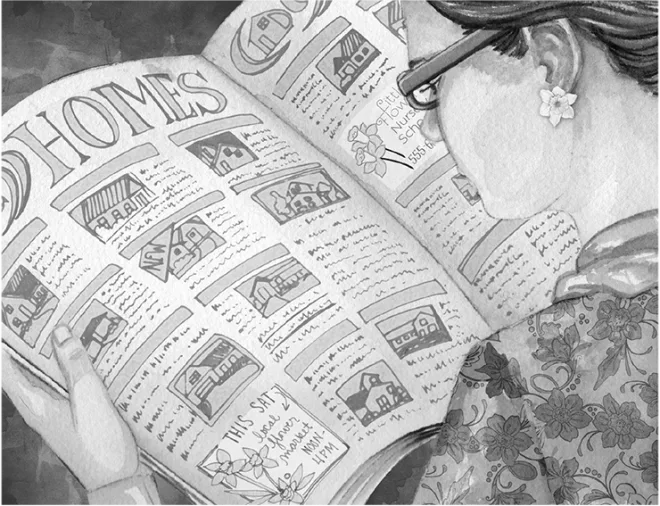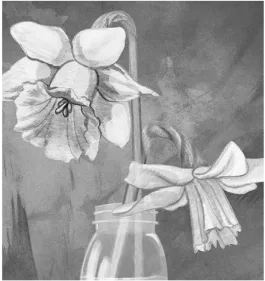I’ve always found wildflowers and farmhouse flowers to be some of the most beautiful sights, if for no other reason than the brilliant array of colors. Sunshine yellow, deep purple, snow white, striking oranges and reds, burgundies, and so much more remind us of the good fortune we have to live in a world filled with such richness.
For some people, like the author of this story, there’s a lot more to it than color. They feel that farmhouse flowers and fortune go hand in hand. I’m hardly one to deny the belief in nature’s signs, and I think when you read this story, you might agree.
In A Simple Sign, Marianne Willburn writes of the long process of attempting to move out of the city and buy a house with enough space for a growing family and a “more expansive” garden. Buying a house is anything but simple, especially when you’re competing with so many other potential buyers. But when one homeowner gifted Marianne with an old variety of farmhouse flower, she took heart that her own family would soon be living in the home.
The “tufted head and bright, sunny color” of a jonquil sat in a vase, offering hope that their offer would be accepted. Unfortunately, things didn’t go as she hoped they would. Little did she realize at that time that another jonquil sat waiting for her and her family.
These Stories Show That Even Simple Farmhouse Flowers Can Be a Sign of Welcome and Happiness
This story comes from our archive spanning over 30 years, and includes more than 130 magazine issues of GreenPrints. Pieces like these that imbue the joy of gardening into everyday life lessons always brighten up my day, and I hope it does for you as well. Enjoy!

A Simple Sign
Was I right—or just naïve?
By Marianne Willburn

A surprising number of us believe in signs—those odd synchronicities or happenings that seem to point us down a certain path. The still, small voice that tells us an impending choice is right—or wrong—and sometimes leaves a tangible reminder just in case we forget to believe it.
I’ve always been one for heeding that voice, in all of its manifestations, but in recent years it has grown quieter, drowned out by a busy life filled with children, husband, home, garden, and writing deadlines. In the bustle of my modern suburban life, I’ve begun relying more on facts and experience than gut instinct.
As our family grew larger and my gardening more expansive, we began to long for a home with more land and more freedom to use it. Unfortunately the same thought was occurring to about half of the population near D.C. at the time. Land prices skyrocketed, and homes with land seemed teasingly just out of our reach.
To complicate matters, we also longed for an older house, one with character and the simple beauty of a modest age—the exact type of home everyone else seemed to be looking for. The right property seemed impossible to find, or at least, to find first.
Yet one day, while driving through the countryside in early March, I found it. An 18th-century, federal-style home on six beautifully usable acres. The owners had homesteaded there for the last 50 years. There were berry beds and asparagus beds and a springhouse that had been converted into a very respectable chicken coop. There were dirt floor stalls in a well-roofed barn to welcome any animals we might wish to manage.
We made an appointment with the agent. The owner spent nearly two hours taking us around the property, proudly showing us barns and coops and beds and porch swings—swings that overlooked a meadow ornamented with apple trees and a pond draped with weeping willows. The owner’s wife was thrilled to find out that I was a garden writer. As we passed through her ornamental garden, she handed me a farmhouse jonquil, an old variety rarely seen in these days of ever bigger and ever more garish daffodils. Its tufted head and bright, sunny color had graced their home every spring for the last half century. More than likely, it had been there for the first half, too.
I received the gift with joy. I felt that it was a sign, a sign that we had finally found our new home. We went home, signed an offer contract, and faxed it at once.
So did another couple.
I was told later that it all came down to money, as these things always do. Though we had offered very fairly on the property, a two-income couple from the city offered extravagantly. At night I would wash the evening dishes and stare at the jonquil the owner had given me, as it quietly dried in a vase on the windowsill. I still felt—I knew somehow—it was a sign of our new home. The deal with the other couple had to fall through…it simply had to.
We waited for two months, our agent telling us how unhappy the owners were with the deal (the buyers had offered more to secure the deal only to take it away after the inspection). On the last day of June, the deal closed, and the city couple got their dream house in the country. We were inconsolable.

I kept the jonquil on my windowsill for another week, then relegated it to an old vase of ancient, ratty hydrangea—unable to throw it away, but equally unable to look at it. I had felt so certain, so very certain that the jonquil was a sign. Now I felt equally certain that I had been incredibly naïve.
A year of looking at houses with increasingly higher price tags ensued. We went back to the tax records to torture ourselves with the knowledge that our perfect house had eventually settled at the price we had originally offered. My garden now seemed claustrophobic—my large maple and walnut, almost malicious. Our agent talked about our taking loans from our retirement savings to fund offers that “couldn’t lose,” as more and more people were in the market. A full year went by. We made offers on two more homes—and were outbid two more times. Our agent’s heartfelt assurance that “the perfect house” would come along was small comfort. I couldn’t help but feel we should have thrown caution (as well as our retirement savings) to the wind and bought that first, truly perfect house.
But in March of the next year, an odd little house came up for sale. My husband and I saw it online at the same time and sent each other hurried, anxious text messages. The square footage barely exceeded our own, but the aboveground basement was completely finished and, more important, the garden encompassed ten and a half beautiful acres. There was a barn, and a meadow, a woods, and impressive specimen trees. A large stream ran from end to end, transversed by a beautiful stone bridge.
The house was only 40 years old, but what it lacked in years it more than made up for in charm. Custom built by the owner, it reflected decades of love and hard work, with little touches that won our hearts and sent us back to the kitchen table to sign yet another offer—an offer we had little hope of winning.
This time it was our turn. The owners accepted our bid, and in the anxiety-filled month that followed, filled with inspections and addendums and counter-addendums, I drove out to the property one day, having been given an open invitation by the owners to visit anytime. Though things were going well, real estate deals are finished only when one is sitting at the title company table. After a year of shattered dreams, I was more than nervous.
The trees were just starting to leaf out with the promise of warmer days, and in a couple of spots along the edges of the stream, I could see the bright sunny heads of wild daffodils blooming yellow against winter-tossed leaves. I picked my way towards one of the stands—and what I saw made me catch my breath. Rare, shaggy heads, vibrant and clear—farmhouse jonquils! Jonquils that had no doubt made their home there for many years. There it was, a flower I had come to know so well, a flower which looked up at me and said, “Welcome home.”
We’ve been in our new house for a few months now. The jonquils are gone, and ferns are taking their place—occasionally interspersed with red cardinal lobelia and meadow rue. Over these wonderful, chaotic weeks, we have come to realize just how beautifully this house and land fit our lives, in ways that the other houses couldn’t. We feel truly blessed.
I now have a dried jonquil from our new home sitting in a vase on my kitchen windowsill. And it has been joined by its elder brother, removed from obscurity—there to remind me that there is a plan greater than my own.
Some signs just take longer to read than others. ❖
By Marianne Willburn, published originally in 2016, in GreenPrints Issue #105. Illustrated by Nicole Tamarin

Do you believe in signs like the one these farmhouse flowers gave this story’s writer?


